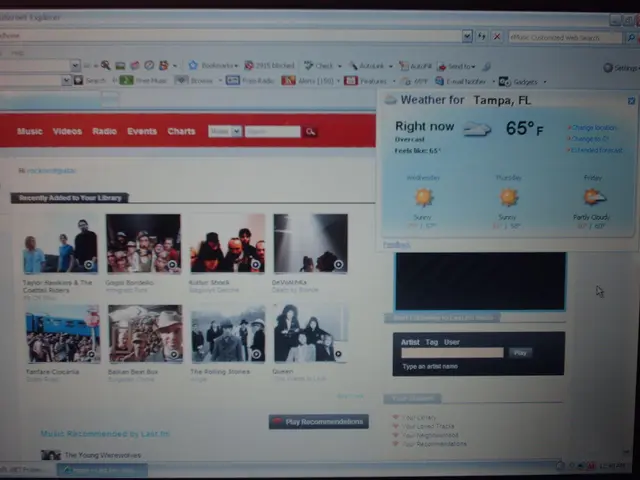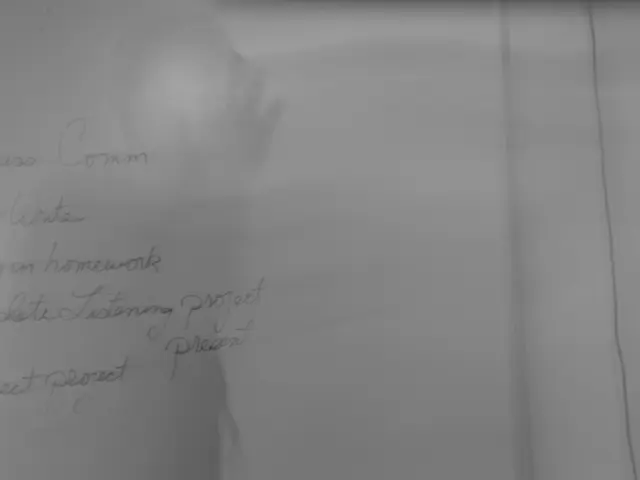Workers in Hollywood ditching traditional employment to pursue self-employed content creation roles
Hollywood's Struggles: A New Era for Creators and the Industry
In the bustling realm of digital content creation, a phenomenon known as the creator economy is thriving. This dynamic sector allows individuals to produce and monetize their own creative works, often bypassing traditional industries like film and television [1]. This shift is primarily fueled by social media, streaming services, and an evolving consumer landscape [1].
The Digital Creator's Rise: A Growing Field
The creator economy is growing at an astonishing pace. Over 1.5 million Americans now work full-time as digital creators, representing a sevenfold increase since 2020 [2][3]. This expansion isn't confined to just tech hubs; digital jobs can be found in every U.S. congressional district [3].
Monetization: Attention is the New Currency
Digital creators earn income primarily through partnerships, advertisements, and sponsored content, with attention serving as the primary currency [4]. Innovative technologies, such as AI-driven platforms, streamline the management of these partnerships and performances [1].
Impacting Traditional Media: Hollywood Takes a Hit
Competition for Talent
The creator economy provides an alternative platform for talent, enabling creators to produce and distribute content without reliance on traditional studios [1]. This shift has led to a reevaluation of how talent is recruited and retained, with many creators preferring the flexibility and creative control offered by digital platforms [1].
Innovation and Agility
The creator economy is highly adaptable, with content being produced and disseminated quickly. This agility contrasts with the slower, more bureaucratic processes in traditional film and television production [1].
Changes in Consumption Patterns
Viewing Habits
The rise of streaming services and social media has significantly altered the way content is consumed. Audiences increasingly favor short-form, on-demand content available through digital platforms, posing a challenge to traditional broadcasting models [1].
Revenue Streams
As viewer attention shifts to digital platforms, so do advertising dollars, transitioning revenue streams away from traditional media [1].
Opportunities and Collaborations
New Talent Pipelines
The creator economy offers new talent pipelines for traditional studios, with successful digital creators potentially transitioning into film and television roles [1].
Collaborations
Studios can collaborate with digital creators to leverage their existing audiences, cultivating outreach, and engagement for both parties [1].
Challenges and Adaptations
Digital Disruption
Traditional film and TV industries must adapt to remain competitive by integrating technology, distribution strategies, and embracing digital content creators [1].
Legal and Ethical Considerations
In the face of a more decentralized content production model, legal and ethical standards regarding intellectual property, copyright, and workplace rights must be reassessed and updated for the digital age [1].
Two years after a writers' and actors' strike sent shockwaves through Hollywood, the film and television industry is still grappling with the aftermath [5]. To add to the turmoil, the industry is battling the repercussions of the most expensive wildfires in California's history, along with a shrinking market [5]. While President Trump proposes 100% tariffs on all films produced outside the U.S., many writers and producers are opting out of Hollywood, embracing the uncharted waters of the creator economy [5].
Amy Suto, a writer and content creator, recounted her experience in Hollywood, rising from a starry-eyed graduate of USC's film school to a writer, eventually moving on to greener pastures [5]. In this new realm, Suto found a creative future that wasn't limited to writing the next Marvel film [5]. She shared her journey, discussing the politics and power dynamics that she encountered, along with the squashing of creativity that led her to seek opportunities outside the industry [5].
The creator economy provides a diverse range of income streams, from writing on Substack to self-publishing books, allowing creators to achieve financial independence [5]. For Suto, leaving the distinctly political world of Hollywood has proved to be lucrative, as she's earned far more since departing than during her time in the industry [5].
In regard to President Trump's proposed 100% tariffs on all films produced outside the U.S., Suto doubts the measures would help the ailing industry [5]. She advocates for a shift in focus, emphasizing the importance of reverting the short-order streaming trend, fostering a conducive atmosphere for creative growth, and adapting to emerging technologies in the digital age [5]. In her view, these changes are crucial for revitalizing the industry while respecting the voice, creativity, and humanity of those driving the stories that need to be told [5].
Sources:1. "The State of the Creator Economy - 2023: Data, Results, and Key Findings" - Morning Brew2. "The rise of creators: why Hollywood's golden age found its challenger in the digital age" - The Independent3. "Bit by bit, creators boom" - The Washington Post4. "The democratization of content creation: how the Internet and digital platforms have empowered creators" - Medium5. "Writer and Content Creator Amy Suto: Hollywood Leaves Some Behind But Creator Economy Offers Hope" - NPR
- The creator economy, a thriving domain within digital content creation, bypasses traditional industries like film and television, fueled by social media, streaming services, and an evolving consumer landscape.
- Monetization in the creator economy sees digital creators earning income primarily through partnerships, advertisements, and sponsored content, with attention serving as the primary currency, aided by innovative technologies like AI-driven platforms.
- The creator economy's rapid expansion is reflection in the significant increase in the number of full-time American digital creators, now at over 1.5 million, a sevenfold increase since 2020.
- The shift towards the creator economy has led to competition for talent in the film and television industry, with creators preferring the flexibility and creative control offered by digital platforms.
- Challenges faced by the traditional film and TV industries include adapting to remain competitive by integrating technology, distribution strategies, and embracing digital content creators.
- The creator economy offers new talent pipelines for traditional studios and presents opportunities for collaboration, shifting revenue streams, and a reevaluation of legal and ethical standards for the digital age.








